Posted in category "Scandals"
The chronicler William of Nangis describes the trial and execution of Marguerite Porete, 1310: 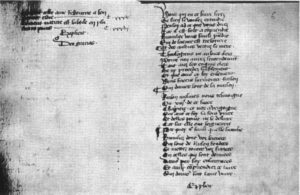
“Around the feast of Pentecost is happened at Paris that a certain pseudo-woman from Hainault, named Marguerite and called ‘la Porete,’ produced a certain book in which, according to the judgement of all the theologians who examined it diligently, many errors and heresies were contained; among which errors (were the beliefs), that the soul can be annihilated in the love of the Creator without censure or conscience or remorse and that it ought to yield to whatever by nature it strives for and desires. This (belief) manifestly rings forth as heresy. Moreover, she did not want to renounce this little book or the errors contained in it, and indeed she even made light of the sentence of excommunication laid on her by the inquisitor of heretical depravity, (who had laid this sentence) because she, although having been lawfully summoned before the bishop, did not want to appear and held out in her hardened malice for a year and more with an obstinate soul. In the end her ideas were exposed in the common field of La Greve through the deliberation of learned men; this was done before clergy and people who had been gathered specially for this purpose, and she was handed over to the secular court. Firmly receiving her into his power, the provost of Paris had her executed the next day by fire. She displayed many signs of penitence, both noble and pious, in her death. For this reason, the faces of many of those who witnessed it were affectionately moved to compassion for her; indeed, the eyes of many were filled with tears.”
Marguerite
Marguerite Porete was a 14th century French mystic who wrote a book entitled “The Mirror of Simple Annihilated Souls and Those Who Only Remain in Will and Desire of Love.” Written during the 1290s, the book was condemned by the French Inquisition as heretical. Marguerite was jailed for a year and a half and asked to recant. When she refused to respond to her inquisitors, she was condemned to death. 
The book provoked controversy, likely because of statements such as “a soul annihilated in the love of the Creator could, and should, grant to nature all that it desires,” which some took to mean that a soul can become one with God and that when in this state it can ignore moral law, it had no need for the Church and its sacraments or code of virtues. This is not what Marguerite taught, since she explained that souls in such a state desired only good and would not be able to sin.
Not much is known about Marguerite’s early life, except that she was born in Hainault in what is now Belgium around 1248 or 1250. She lived during different periods in Valenciennes, Lorraine, Reims and Paris. She seems to have been a stubborn woman, determined to share her ideas despite ecclesiastical censure. I don’t know why she refused to speak to her inquisitors during her trial and captivity. It may have been disdain or defiance, or it may have been to induce a similar helplessness and frustration in her persecutors. She refused to participate in an outcome that they had already decided.
Tina Beattie, professor of Catholic Studies at Roehampton University, London, said: “Little is known about Porete, apart from the record of her trial and what can be gleaned from her writings. It seems likely she was associated with the Beguines, a women’s religious movement which spread across northern Europe during the 13th and 14th centuries. Although the Beguines devoted themselves to charity, chastity and good works, they took no religious vows and their lifestyles varied greatly, from solitary itinerants (of which Porete was likely one) to enclosed communities. The Beguines were part of an era of vigorous spiritual flourishing during the Middle Ages. They were condemned by the Council of Vienne (1311-1312), which also condemned the Free Spirit Movement with which the Beguines were sometimes (and probably erroneously) identified.”
Her Killers – Bishops, Inquisitor, King
Gui de Colle Medio (or de Colmier) was bishop of Cambrai from 1296-1306. He condemned The Mirror and ordered it publicly burned in Marguerite’s presence in Valenciennes. She was ordered not to circulate her ideas or the book again.
The next bishop of Cambrai, Philippe de Marigny, made her life worse. His persecutions combined politics and religion. Philippe Le Portier de Marigny was appointed bishop of Cambrai in 1301 and archbishop of Sens in 1309. His half-brother, Enguerrand de Marigny, Baron Le Portier, was the chamberlain and chief minister to Philip IV, the king of France. Enguerrand was influential in obtaining these appointments for his brother. Philippe de Marigny became an important figure in the trials of the Knights Templar, and in the execution of Templar’s grand master, Jacques de Molay. De Molay was burned alive with three other Templar leaders on a scaffold in front of Notre Dame Cathedral on March 18, 1314. He uttered his famous curse, and both King Philip IV and Pope Clement V followed him to death (and judgement) within a year. The new king of France, Louis X, had Enguerrand de Marigny hanged for sorcery in April 1315. 
Marguerite Porete’s main persecutor and tormenter was the Inquisitor William of Paris, also known as William of Humbert. This Dominican priest and theologian was the confessor to King Philip IV. Appointed Inquisitor in 1303, William also played an important role in the trials and persecution of the Knights Templar. Interestingly, William died in 1314, the same year as Jacques de Molay, King Philip IV and Pope Clement V. Perhaps Molay included him in his curse.
The piety and politics of King Philip IV helped shape the deaths of Marguerite and the Knights Templar. Many of the enemies of the crown were cast as heretics; a convenient label for a self-appointed defender of the Faith. William of Paris supported the political machinations of the French king by suppressing the Knights Templar. The King aided the Dominican’s interests in ridding him of Marguerite—an independent and potentially dangerous religious voice. 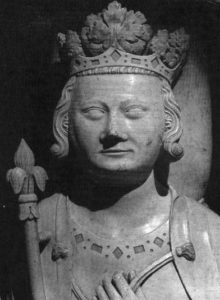
Arrest and Trial
In 1308 William had Marguerite Porete arrested along with a Beghard, Guiard de Cressonessart, who was also put on trial for heresy. Their trial began early in 1310 after they were held in prison in Paris for a year and a half. Under tremendous pressure, de Cressonessart eventually confessed and was found guilty. Marguerite refused to recant, withdraw her book or cooperative with the authorities, refusing to take the oath required by the Inquisitor to proceed with the trial. William was not going to have any easy time proving her a heretic. Marguerite had consulted three church authorities about her writing and gained their approval, including the highly respected Master of Theology Godfrey of Fontaines at the University of Paris. Godfrey’s involvement was an important factor in William’s handling of the trial, requiring him to build his case as carefully as possible. He consulted over 20 theologians—an excessive number–on the question of The Mirror’s orthodoxy. 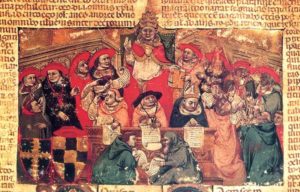
Death
On May 31, 1310 William of Paris read out a sentence that declared Marguerite “called Porete,” a beguine from Hainault, to be a relapsed heretic and released her to secular authority for punishment. He ordered all copies of a book she had written to be confiscated. William called her a “pseudo-mulier” (fake woman) and described The Mirror as “filled with errors and heresies.” William next consigned Guiard de Cressonessart, a would-be defender of Marguerite to life imprisonment. Marguerite condemned to be burnt at the stake as a relapsed heretic. On June 1, 1310 Marguerite was burned alive along with a relapsed Jew at the Place de Greve – today the Place de l’Hotel de Ville – in Paris. 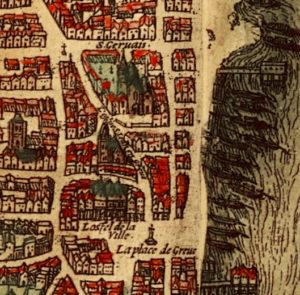
Why Was Marguerite a Target?
There are several possible reasons why so much effort was made to put Marguerite on trial and kill her.
- A growing hostility to the Beguine movement by Franciscans and Dominicans. Beguines were lay religious women who were not under male authority and direction and were outside civic and ecclesiastical structures. In 1311—the year after Marguerite’s death—ecclesiastical officials made several specific connections between Marguerite’s ideas and deeds and the Beguine status in general at the Council of Vienne.
- The popularity of The Mirror of Simple Souls gave Marguerite a prominent profile other lay writers didn’t possess. She also wrote in French, not Latin.
- Marguerite’s perceived association with the Free Spirit Movement or Brethren of the Free Spirit. Free Spirits were not a single movement or school of thought, but they caused great unease among churchman. They were considered heretical because of their antinomian views. One of beliefs some Free Spirits held is that they could not sin by having sexual relations with any person. Extracts of The Mirror of Simple Souls were cited in the bull Ad Nostrum issued by the Council of Vienne to condemn the Free Spirit movement as heretical.
Was there a whiff of homophobia in William of Paris’ denunciation of Marguerite as a “pseudo-woman”?
Marguerite Porete’s era is a mirror to our own. 40 years ago conservative political and religious leaders like President Ronald Regan and Pope John Paul II colluded on major political actions and social change. Lay Catholics began to search for new ways to experience a direct relationship to God. Many of these explorations were condemned since they were outside of traditional structures. The prevailing norms of sexual and gender expression were openly questioned by ordinary people. Sex and sexuality are fraught and fearful topics for the Catholic hierarchy, and many bishops tried their best to suppress them. Their best allies were presidents focused on wealth and expansion. Today, President Trump sounds and acts a lot like King Philip IV.
We can point to one improvement in the last 700 years. We can no longer be burned at the stake. 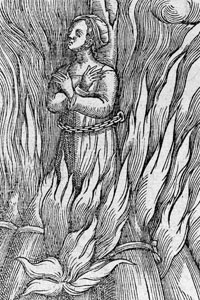
Further Reading:
The Beguine, the Angel, and the Inquisitor: The Trials of Marguerite Porete and Guiard of Cressonessart by Sean L. Field
Allegories of Love in Marguerite Porete’s ‘Mirror of Simple Souls’ by Suzanne Kocher
A Companion to Marguerite Porete and the Mirror of Simple Souls by Robert Stauffer and Wendy R. Terry
The World on the End of a Reed by Francesca Caroline Bussey
The Heresy of the Free Spirit in the Later Middle Ages by Robert E. Lerner
Courting Sanctity: Holy Women and the Capetians by Sean L. Field
Transmitting the Memory of a Medieval Heretic: Early Modern French Historians on Marguerite Porete by Danielle C. Dubois
Marguerite Porete: The Mirror of Simple Souls by Ellen Babinsky
Pope Benedict XVI has contributed content to a new book, From the Depths of Our Hearts, which appears along with an essay by Cardinal Robert Sarah, the prefect of the Congregation for Divine Worship. The book, which was released this week, is an emotional defense of priestly celibacy. 
In an amazing coincidence, the book comes while Pope Francis is considering the possibility of allowing older, married men to be ordained as priests in the Amazon region.
What wasn’t mentioned in the book is an action Pope Francis’ predecessor, Benedict XVI, took almost 9 years ago to the day the book was published: he welcomed married Anglican priests who planned to convert to Catholicism. In other words, the same Benedict that is writing from the depths of his heart on the need for priestly celibacy was the first pope to allow married Anglican priests who converted to Catholicism to serve as Catholic priests. A small but revealing point: these same men left the Church of England because they wholeheartedly disagreed with the ordination of women and openly gay priests.
If this isn’t bad/funny enough, Cardinal Sarah and Archbishop Georg Ganswein, Pope Benedict’s good-looking and long-time private secretary, are engaged in a slap-fest over Benedict’s participation in the book. Did Cardinal Sarah use the 92-year-old, frail and mentally diminishing Pope Benedict in a fight against Pope Francis and/or to prop up book sales?
Archbishop Ganswein openly contradicted Cardinal Sarah’s official account of the genesis of the book, issuing a “clarification” on January 14, 2020 saying that while Pope Emeritus Benedict was certainly aware of Cardinal Sarah’s plan to produce a book on celibacy, Benedict “did not approve a project for a co-authored book and he had not seen or authorized the cover.” Archbishop Ganswein disclosed that he had, at the former pope’s request, asked Ignatius Press to remove the name of Benedict XVI as co-author of the book. Cardinal Sarah took a step back when he announced the same day on Twitter: “Considering the controversies that the publication of the book From the Depths of Our Hearts has provoked, it is decided that the author of the book for future publications will be: Cdl. Sarah, with the contribution of Benedict XVI.” So far, the publishers are standing firm with Pope Emeritus Benedict XVI as co-author. 
Cardinal Sarah’s pal, Archbishop Carlo Maria Vigano, has denounced Archbishop Ganswein for what he calls his “abusive and systematic control” of the pope emeritus. Of course, Vigano may still be smarting from the time Archbishop Ganswein told news media that contrary to Vigano’s claim, Pope Benedict did not confirm Vigano’s “testimony” on Pope Francis and the Cardinal McCarrick scandal. Ganswein said the whole thing was “fake news.”
Isn’t it fun to watch conservative prelates go picnicking on one another!
On December 21, 2017 Cardinal Angelo Sodano celebrated the funeral Mass for fugitive Cardinal Bernard Law. Over the protests of many, the Mass was celebrated in St. Peter’s Basilica. In his homily, Sodano said, “unfortunately, each one of us can sometimes lack in fidelity to our mission. That is why, at the beginning of every Mass, we say the ‘Confiteor.’” This prayer begins, “I confess to almighty God and to you, my brothers and sisters, that I have greatly sinned.” 
On December 21, 2019, the same day it was reported that Cardinal Sodano had shielded sexually abusive clergy in the Legion of Christ, Pope Francis accepted the 92-year-old cardinal’s resignation as dean of the College of Cardinals. Pope Francis used the occasion to express “my gratitude, including in the name of the members of the College of Cardinals, for the precious and punctual service he (Cardinal Sodano) has offered as dean for many years with availability, dedication, efficiency and a great ability to organize and coordinate.”
“For some three decades he was the man in the Vatican no one dared cross,” said Robert Mickens, the editor-in-chief of La Croix International. “Even the popes he served were careful to gain his consent because of the loyalty he commanded from any key people at all levels of the Roman Curia.”
In the December 21, 2019 report the Legion of Christ identified 33 priests and 71 seminarians as sex abusers. The report stated that Cardinal Sodano was the one who led efforts to cover up reports of abuse when he served as the Vatican’s Secretary of State. Many of the reports of abuse involved the notorious predator priest, Marcial Maciel Degollago, the founder and director general of the Legion of Christ. Maciel was respected by many within the Vatican, including Pope John Paul II, as a prolific fund raiser and seminarian recruiter. Near the time of his death in 2005 he was publicly revealed to be a thief, drug addict and serial sexual abuser of young men and boys. Marcial maintained sexual relationships with at least two women and fathered six children. He sexually abused two of his sons.
For many decades, Cardinal Sodano’s chief priorities have been power and money. Money from the Legion flowed to Sodano in the form of gifts and honoraria. “Cardinal Sodano was a cheerleader for the Legion,” said one of the ex-Legionaries. “He’d come give a talk at Christmas and they’d give him $10,000.” “It was very clear that Angelo Sodano was going to do everything in his power to protect both Maciel and the Legion of Christ,” said Glenn Favreau, an advocate for ex-Legionaries who was ordained a deacon in the order and worked at its offices in Rome. “Sodano came over with his entire family, 200 of them, for a big meal when he was named cardinal,” recalled Favreau. “And we fed them all. When he became secretary of state there was another celebration.”
His family also benefited from his position and connections. A nephew, Andrea Sodano, was involved in a real estate business with Raffaello Follieri, who was jailed in New York in 2008 on charges of fraud and money-laundering. A major part of his business was buying up church and parish properties at fire sale prices to pay for lawsuits by sex abuse victims. The Follieri Group’s business claimed connections to “senior members of the Vatican hierarchy.” Follieri misused investor funds to pay Andrea Sodano for engineering studies and services he never performed. In exchange, Sodano’s nephew traveled with Follieri to pitch church officials, and gain access to the Vatican grounds, attending a service with the Pope, get his picture taken with the Pope, and arrange for private tours of the Vatican gardens and museum. Marical also hired Andrea Sodano as a building consultant for projects. Legionaires overseeing one project complained to Marciel that Sodano’s work was late and poorly done; they were reluctant to pay his invoices. Marciel yelled at them: “Pay him! You pay him!”
How was Pope Francis finally able to get rid of Sodano? In 2005 Pope Benedict tried and gave up, keeping him as Secretary of State. Were the claws of this rapacious bird finally too weak to tear and rend and hang on any longer? The Legion’s own report finally did the job. 
I can’t shake the image of Cardinal Sodano as a scarlet festooned Don Fanucci, the Black Hand leader in Mario Puzo’s The Godfather and The Godfather Part II movie. Fanucci’s character is based on the personality of Ignazio Lupo, a real-life Black Hand gangster and mafioso specializing in extortion, robbery and murder. “You and your friends should show me some respect,” Fanucci threatened Vito Corleone. “You should let me wet my beak a little…Now don’t refuse me. Understand, paisan? Understand, paisan?…Tell your friends I don’t want a lot. Just enough to wet my beak. Don’t be afraid to tell them!” Fanucci did quite well until the day he threatened somebody tougher. Surprise! He took a bullet to the head.

Archbishop Carlo Maria Vigano is back in the news. He wrote a letter of support to a man who organized a rosary protest of an AIDS benefit at St. Stephen’s Cathedral in Vienna held on November 30, 2019. The rosary activist is the same man who defended the faith by pitching Pachamama statues into the Tiber during the Synod on the Amazon in Rome.
“Once again Vienna, the glorious capital that was able to resist the advance of the Ottoman Horde with the weapons of light and faith suffers — dismayed and scandalized — yet another homoerotic and blasphemous provocation…”
“I join with all my heart the little flock, who are perhaps without a Shepherd but are called to gather in the Heart of the Immaculata to implore from her, through the reparative prayer of the Holy Rosary, God’s forgiveness for the offenses and outrages that have been perpetrated.”
“Faced with the sinister vision of a church that seems to want to rebuild itself against the faith and against the truth of the human person, that supports and promotes that which degrades life and causes the loss of souls, we wish to redouble our faith and tirelessly implore the Immaculate Mother of God and our true Mother: Vitam praesta puram, iter para tutum, ut videntes Iesum semper colletemur. Keep our life all spotless, make our way secure, till we find in Jesus, joy for evermore (Ave Maris Stella). ”
I assume that Vigano’s description of a little flock “who are perhaps without a Shepherd” is a veiled, but defiant statement that Pope Francis really isn’t Pope. I mean, how could a REAL Pope be seen with all these Muslims, idol worshippers from the Amazon, and advocate mercy and welcome instead of showing sinners/liberals the door?
The same guy who trashed Pope Francis on the “secret memo” curbing Cardinal McCarrick’s public appearances, protected the sexual and possible criminal misconduct by Archbishop John C. Nienstedt of St. Paul and Minneapolis when he was the U.S. papal nuncio. When Nienstedt was cornered, Archbishop Vigano ordered the investigation called off, and evidence destroyed. Vigano was recently exposed as looking the other way on West Virginia’s Bishop Bransfield’s sexual and financial excesses. Bransfield was another prelate who had a taste for seminarians. These guys behaved exactly like Cardinal McCarrick! Imagine that!
Archbishop Vigano witnessed–or was privy to–so much sin and scandal over the years in the Vatican and U.S. He wrote fewer nasty letters and made fewer sanctimonious public statements when he still had hopes of being named a cardinal. Now that his fondest hope is dashed, he can really let it rip.

There is a wealth of Pious Trash in Msgr. Charles Pope’s column, “Church’s Silence Deafens World” published in the National Catholic Register this month. It was a long discourse on the negative effects of tolerating bad behavior in society and in the church as defined by Catholic conservatives, and a major whine on why isn’t the Pope doing something about it!
“The faithful are not discouraged, they are confused and scandalized. Many have been led to think that sins like divorce and remarriage, homosexual acts and idolatry are compatible with the Catholic faith. They are not! Yet some of the most awful things have been done and said by Church leaders (purportedly or definitively) without any clear explanation, let alone attempts at refutation. The silence has been deafening. The enemies of the faith are encouraged while the faithful are disheartened.”
I hope Msgr. Pope is not defining “enemies of the faith” as liberal Catholics, feminist Catholics, lesbian and gay Catholics and our defenders, Catholics who have divorced and remarried, and Catholics who are weary and fed up with legalistic and narrow definitions of “faithful Catholics.” 
By idolatry I assume Msgr. Pope is referring to the wooden carvings of Pachamama, a representation of a naked pregnant Amazonian woman that were displayed and part of some ceremonies during the Amazonian Synod in October. The Pachamama is a female fertility figure venerated as “Mother Earth” by some native peoples in the Amazon region. The woman who presented it to Pope Francis called it “Our Lady of the Amazon.” It is a symbol of Life. Why is this idolatry compared to our church statuary? Most churches and cathedrals in the U.S. have a statue of the Blessed Mother standing on a snake. She is crowned by real or plastic flowers every May. I remember singing when I was a teenager: Bring flow’rs of the fairest, Bring flow’rs of the rarest, From garden and woodland, and hillside and vale; Our full hearts are swelling, Our Glad voices telling, The praise of the loveliest Rose of the Vale. O Mary! We crown thee with blossoms today, Queen of the Angels, Queen of the May, O Mary! we crown thee with blossoms today, Queen of the Angels, Queen of the May. 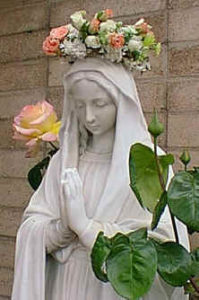
The lyrics certainly represent spring and fertility. The ritual of flowers and the observation has its roots in Pagan Europe. In addition, every parish church has a statue of their patron saint. St. Bartholomew holds his skin and a flaying knife; Saint Denis holds his talking head, and St. Lucy holds a plate with her eyeballs. Everyday Catholics are familiar with gruesome martyrdom stories, but I can imagine the wide-eyed reaction from first-time visitors who think displaying such figures is weird, icky or sick. To us it’s not idolatry. It’s an artistic representation that’s part of our heritage.
The ongoing sex abuse crisis has ALL Catholics scandalized. This includes not only the priests and religious that used the young and vulnerable for sexual pleasure and release but the bishops and others in the hierarchy who protected and covered up for them, and in some cases, were abusers themselves. On top of the sex abuse lies and hypocrisy, a second scandal involves the millions and millions in contributions and gifts that were used to fund decadent lifestyles, hush money and settlements that were out of public view. They were protected by opaque accounting practices and careerist clerics who kept their mouths shut.
Are any priests or bishops willing to forfeit their ecclesiastical careers and name names? Release hidden records to newspapers and the local District Attorney? Drag the scum out into the light of day? The silence is deafening from the men who know.
“If we Christians are right in believing that salvation belongs to Jesus Christ, that it does not come from us–and that our hand cannot stop what God allows for us, then yes, there is hope in eternity even for those who take their own lives. Having said that, I think that we must not call what is bad good, what is wrong right. Because we are Christians, we must say what we know is the truth – that taking your own life is against God who made us and against everyone who loves us. Our lives are not our own. They are not ours to do with as we please. God gave us life, and we are to be good stewards of that gift for as long as God permits. The finality of suicide makes this all the worse. You cannot make things right again.” 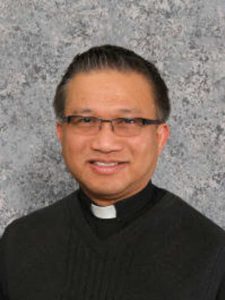
Read the whole homily here.
Those comforting, inspiring and hopeful words were spoken by a priest, Fr. Don LaCuesta, at the funeral Mass of a high school student who had committed suicide. Fr. LaCuesta is the pastor of Our Lady of Mount Carmel Catholic Church in Temperance, Michigan. In discussing the service with the priest, the parents had asked that he focus on their son’s life. They also discussed some other arrangements for the service, including having his siblings cover his coffin with the pall.
None of that happened. Instead, the family got blindsided with a lecture about the sinfulness of suicide and its awful consequences. The family, relatives and classmates of the deceased were visibly distraught. Many of them did not know the young man had committed suicide. The father twice approached the pulpit asking the priest to stop the homily, but the priest refused and continued to the end of his sermon.
Since then, the story has received national attention. Archbishop Allen H. Vigneron, publicly reprimanded and sanctioned him. The youth’s mother recently filed a lawsuit against Fr. LaCuesta and the Archdiocese which details their grievances. 
I’m not sure why Catholic conservatives always feel compelled to defend their brethren, even in nonsensical situations. The Catholic World Report recently reprinted a column by Dr. Edward N. Peters about the incident entitled “God Bless Fr. LaCuesta.” Dr. Peter’s comments certainly earned him Honorable Mention in this week’s Pious Trash award.
“Remember? The library of the bishop’s house? I hesitated at first in saying that I trully (sic) love you. What I have been feeling for you is something totally new and different from all the other feelings of love I have experienced. Now, I have no hesitations in saying that I love you (in private and in public) and I will always love you more than yesterday. I am afraid,” he continued, “that all that you know about me may compromise your freedom to love or to leave…At this point I cannot imagine my life without you. But I can’t bear the thought of you being entrapped either,” he concluded. “So my beloved Matthew, I hope and pray that you are ‘my other ½ that walks life’s journey with me.” The writer was worried that Matthew would feel “entrapped” by him because he held an important post in the diocese and because he had revealed painful stories about being hurt by other men.

In a staff meeting recorded by Rev. Biernat, Bishop Malone griped, “It sounds like a soap opera. It sounds like a love triangle. And you know what the media can do with that. With all else that’s going on in the diocese and all the…attacks on my credibility…and that I’ve known that something’s going on here that shouldn’t be and I let it go…I mean this is a disaster.” 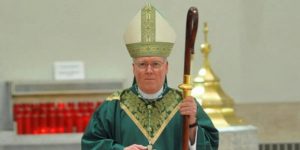
Bishop Malone went on to explain Bojanowski’s relationship with the Rev. Jeffrey Nowak. The two had been friends and that Nowak mentored Bojanowski as he discerned a vocation to priesthood. After Bojanowski met Biernat, he began spending time with him. “Matthew’s relationship with Nowak cooled you might say, and this was disturbing to Nowak,” Bishop Malone explained. “Fr. Nowak secretly photographed the letter he found in Matthew’s apartment in Boston, when he was there.” 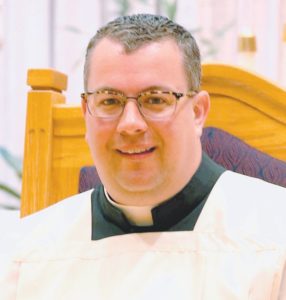
In a complaint filed with Bishop Malone’s office in November 2018, Bojanowski said Rev. Nowak began sexually pursuing him based on information he told the priest in the confessional. Bojanowski said when he turned down Nowak’s advances, the priest became vindictive and jealous of his friendship with Rev. Biernat, Bishop Malone’s secretary. 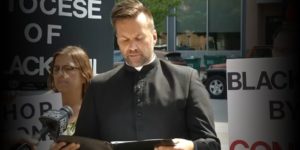
Bishop Malone was afraid of blackmail. Rev. Biernat told the bishop that he was aware that “there’s a lot of stuff Jeff has,” including information about a prominent priest who was allegedly having an affair. “Jeff is dangerous,” Malone said.
Rev. Biernat had his own experience with a priestly predator in the Buffalo diocese. In 2003, Biernat left Poland to attend Buffalo’s Christ the King Seminary. Once enrolled, was assigned to live with Rev. Art Smith at St. Thomas Aquinas Church in South Buffalo. Shortly after he arrived, Rev. Smith made his move. “Art Smith assaulted me sexually,” Biernat said. “At that time I knew enough English to order (a) latte at Starbucks, not to report the sexual assault,” he said. “You know, they don’t teach you these words in English second language classes.”
A document sent by Bishop Malone to the Vatican, and obtained by a local Buffalo TV station, confirmed Rev. Biernat’s account. “When Father Art was pastor in one of our city’s parishes, a seminarian noted that Father Art seemed to ‘groom’ him to get his affection. One night the seminarian recounted an incident where Father Art came to his room, came into his bed, and began to touch his genitalia.”
Rev. Smith is currently on administrative leave while a child sex abuse claim against him is decided by the Vatican. When contacted by reporters, he denied he assaulted Biernat. “That’s not true at all,” said Smith. “I know exactly what he’s talking about. All I will say is, we had a Christmas party, he had a little too much to drink, I admit I had a little too much to drink, and I told him I liked him more than he would ever know. And that was the end of it. It was nothing more.” 
Seminarian Biernat was in for a bigger shock than having his cock and balls drunkenly fondled. When he reported the incident to Auxiliary Bishop Edward W. Grosz, he received this chilling response: “He said it was my fault because I didn’t lock the door. And was Father Art drunk, because if he was maybe he did not know what he was doing? And then he said, ‘Ryszard, if you don’t stop talking about this you will not become a priest. You understand me? You understand me?”
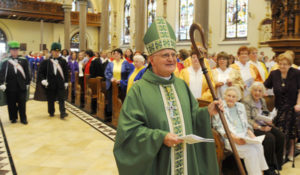
The soap opera continues. Now the diocese has cancelled all its credit cards, probably as a prelude to declaring bankruptcy. It is battling over 160 sex abuse lawsuits, and under investigation by the state attorney general’s office.
Bishop Malone’s fate is in the hands of Cardinal Timothy Dolan of New York and the Vatican. Undoubtedly Dolan’s antennae are quivering trying to find a signal on what to do. He has a finely tuned political sense. Gay priests do have loose networks, and the New York diocese has its own dirty underwear Dolan would like to avoid airing in the New York Post or feature article in the Times. “Cardinal Dolan has been following the situation in Buffalo very carefully,” said Joseph Zwilling, communication director for the New York archdiocese. “He is aware of his responsibilities under Vos estis lux mundi, he has been consulting extensively both with individuals in Buffalo, including Bishop Malone, clergy and laity.” No timetable on any actions. Mum’s the word.

Bishop Malone continues to defend his handling of the love triangle as “a very complex, convoluted matter.” In addition to the love triangle, he is also battling fallout from the pornographic pizza party involving Hamburg, New York pastors and Christ the King seminarians in April 2019. Read juicy details here and here. So far, his scandal management isn’t working as hoped.
The compassionless Auxiliary Bishop Edward W. Grosz still serves the diocese. Bishop Grosz was named in a string of sex abuse cover ups including one involving a six-year-old boy. The child was pressured to perform oral sex on a priest. A seminarian found the boy with semen on his hair, hand and shirt. He reported the abuse to Bishop Edward Head and Bishop Grosz. He heard no response until months later, when he said he talked to Father Peter Popadick, the longtime secretary to Bishop Head. “He stated something to the effect that…my letter wasn’t well-appreciated,” the seminarian said. “It wasn’t well taken.”
Rev. Ryszard Biernat and the Rev. Jeffrey Nowak are both on leave. The Erie County District Attorney has opened an investigation into Nowak’s sexual harassment of Matthew Bojanowski. Matthew Bojanowski withdrew from Christ the King Seminary at the end of August 2019.
What do the ordinary Catholics of Buffalo who are watching this soap opera unfold think and feel? Will they wonder about what every priest on the altar has he been doing before consecrating the body of Christ? What sexcapades, drunken parties and hush money is my weekly offering going to support? Who ARE these men I used to respect? Do I have enough gladness and hope left to continue being here?
I used to feel sympathetic and supportive of gay priests, but I don’t anymore. One bunch is screwing around like they live in the world’s biggest gay bar. The other bunch goes on with their lives and pretends that this behavior doesn’t involve them. Yes, it does. How can they write homilies with atrocities happening right in the next room? I would ask them to reflect on how to live a holy life with compromised morals.
In many ways, the most disgust is reserved for senior churchmen—straight and gay. In Buffalo, they were neither good shepherds nor asset managers. Why isn’t Pope Francis calling them to Rome and publicly knocking their mitres off their heads? THAT would make for an Emmy-award-winning show!

Many church officials are going nuts over transgender people calling them unnatural, delusional, or a fad. Male and Female He Created Them: Towards a Path of Dialogue on the Question of Gender Theory in Education, was issued by the Vatican’s Congregation for Catholic Education on June 10, 2019. The document brands changing understanding toward gender identity and sexuality as a cultural and historical trend in “gender theory” that is contrary to the teachings of the Catholic Church.
How does the Vatican explain its own “gender theory” creation–the Castrati? As with most sexual and religious issues in Catholicism, misogyny is at the bottom of it. 
In 1588, Pope Sixtus V banned women from singing on stage in any public theater or opera house. They were already banned from singing in church by the Pauline dictum “mulieres in ecclesiis tacesant” (“let women keep silent in churches” 1 Corinthians, ch.14, v. 34). In 1589, in response to a demand for feminine voices to hit the high notes, Pope Sixtus V published the bull Cum Pro Nostro Pastorali Munere, reorganizing the choir at St. Peter’s Basilica specifically to include castrati. The pope was aware the public craved the “voices of angels.”
The process of castrating promising young boys to compensate for the loss of female sopranos became prevalent. This surgical manipulation of nature preserved boys’ high youthful voices although they had the vocal power of men. The promise of lucrative careers persuaded many poor Italian parents to castrate their sons if they possessed musical talent. It is believed that many operations to remove testicles were carried out by slitting the groin and severing the spermatic cord. Some boys could still achieve an erection depending on the age they were castrated.
Castrati were sexually attractive to members of both sexes. Because male castrati could not procreate, women found them particularly attractive as casual sex partners. Castrati developed the reputation of having enhanced sexual prowess due to their lack of sensation.
According to a story by author Tony Perrottet, even the famous Casanova was tempted. “Rome forces every man to become a pederast,” he sighed in his memoirs. His most confusing moment came when he met a particularly lovely teenage castrato named Bellino in an inn. Casanova was bewitched, going so far as to offer a gold doubloon to see the boy’s genitals. In an improbable twist, when Casanova grabbed Bellino in a fit of passion, he discovered a false penis: it turned out that the castrato was a girl, who historians have identified as Teresa Lanti. She had taken up the disguise to circumvent the ban on female singers in Italy. She later “came out” to perform in other European countries which did not have restrictions on female singers.
In the 17th century thousands of boys between the ages of 8 and 12 were castrated annually. While there is no exact figure, 80% are estimated to have survived the surgery. A lucky few became celebrities. The rest festered in small church choirs or became prostitutes or beggars. The castrati often grew up with feminine features and smooth, hairless bodies. Some of them were tall and gangly, others grew breasts and heavy buttocks. Castration for the sake of art was finally banned in the early 19th century. However, Italian doctors continued to create castrati until 1870. The Vatican employed them as singers in the Sistine Chapel until 1903. In truth, the church condoned—or looked the other way—when adolescent boys were castrated in order to produce males with soprano voices. 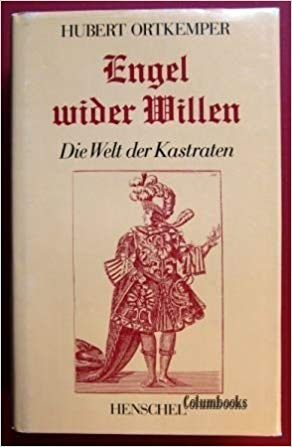
In the 1993 book, Engel wider Willen: Die Welt der Kastraten (Angels Against their Will) German historian Hubert Ortkemper said the castrato Alessandro Moreschi (1858-1922) performed in the Sistine Chapel until 1913. Moreschi lived long enough to make recordings in 1902 and 1904. You can listen to him sing, “Ave Maria” here. 
The most famous castrato, Carlo Broschi, was born in a small city in Southern Italy in 1705. Better known by his stage name Farinelli; he became the greatest opera singer of the 18th century, performing all over Europe. His stage career lasted from 1720 to 1737. He outlived most of his contemporaries and died in Bologna in 1782. In 2006, Farinelli’s remains were exhumed to be moved to another cemetery. Scientists and antiquarians took the opportunity to study the effects of castration on body development. They discovered osteoporosis and a condition called hyperostosis frontalis interna in Farinelli’s bones. These conditions are common in older, post-menopausal women. 
In his mind-blowing article “Some Men Are Born Eunuchs” former Providence College professor, Anthony Esolen, compared the castrati operations to the process of transitioning from male to female (transwomen). His verdict: “However sick it was to do that then; it is far sicker to do what we do now.” According to his reasoning, a castrated boy at least produced a beneficial outcome; a beautiful voice for art or liturgy, financial security, or social status. “He” would still be a “he.” In contrast, the “mutilation” a transwoman endures to achieve feminine characteristics does not produce a beneficial outcome, only a freak who was “troweled out for a mock vagina.” “He” wants to become a “she.” Esolen’s article is obviously meant to defend the Church’s position on gender changes and transsexuals. His loathing of feminists, homosexuals, and transsexuals is evident. But in his haste to condemn adult males who chemically and surgically transition to female, he ignores the physical changes of the castrati. They became feminine, too, with high voices, breasts, big asses and soft skin. What is also evident is his delusion that a small boy, 8, 9, or 10 years old could make the choice to be castrated. It wasn’t a noble gesture. They were pushed into the barbershop by their parents or a priest.
The strong whiff of misogyny in the Esolen article is reminiscent of Pope Sixtus V’s decree to ban women’s voices in church and the stage and substitute them with castrati. It appears that it’s better to have males with no balls in the choir than women. 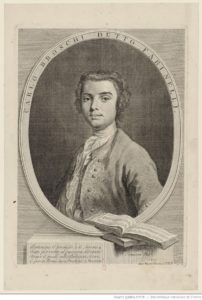
Bishop Bransfield’s lifestyle was too transparent. Archbishop Lori’s investigation of him wasn’t transparent enough.
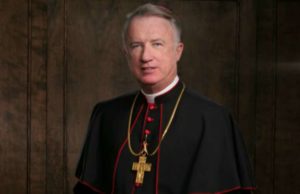
Bishop Michael J. Bransfield is the retired bishop of the Wheeling-Charleston, West Virginia diocese. He currently lives near Philadelphia, PA. Pope Francis accepted his resignation eight days after he turned 75 in September 2018. Bransfield was appointed bishop by Pope Benedict XVI in 2005. West Virginia is one of the poorest states in the U.S., and has very few Catholics, about 78,000 or just 4% of the population. Before he was named bishop, Bransfield was the rector of the Basilica of the Shrine of the Immaculate Conception in Washington, DC from 1990 to 2005. He arrived in West Virginia with a reputation for enjoying a “party atmosphere” from his time in Washington. Bishop Bransfield was a regular visitor to the Vatican. In 2010 he presented a cake to Pope Benedict for the pope’s 83rd birthday. He was elected president of the Papal Foundation by his fellow clerics. This nonprofit distributes millions of dollars to charitable projects on the pope’s behalf.
A few days after Bishop Bransfield’s retirement Pope Francis appointed Archbishop William E. Lori of Baltimore, Maryland as apostolic administrator, with a mandate to investigate allegations of sexual harassment of adults and financial improprieties by Bishop Bransfield.
Archbishop William E. Lori is the archbishop of the Baltimore, Maryland archdiocese and metropolitan for the region. He was appointed archbishop of Baltimore by Pope Benedict XVI in 2012. In the 1990s, he served as secretary, chancellor, moderator of the curia, and vicar general to James Cardinal Hickey, Archbishop of Washington, DC who was a rabid tormenter of New Ways Ministry, a positive LGBT Catholic ministry. In 2001, Lori was appointed bishop of Bridgeport, Connecticut. While serving in Bridgeport, Lori fought against releasing the names of diocesan priests who were being sued for sexual abuse. Since then, he has gone up the U.S. Conference of Catholic Bishops career ladder rung by rung. He is the former chairman and current member of the USCCB Committee on Doctrine; Ad Hoc Committee on Universities and Colleges, Committee on Pro-Life Activities, Ad Hoc Committee for the Defense of Marriage, Ad Hoc Committee on Sexual Abuse, and chairman of the Ad Hoc Committee for Religious Liberty.
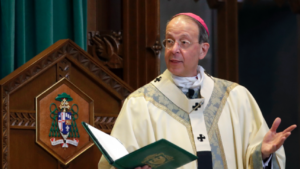
I encountered Bishop Lori in 2007, when he was still in Bridgeport but serving as the chair of the USCCB committee on Doctrine. The Vatican had recently published Ministry to Persons with a Homosexual Inclination: Guidelines for Pastoral Care. This document was extremely hurtful and negative to lesbian and gay Catholics. Along with another couple, my wife and I sent a letter to Bishop Lori describing our feelings about it and expressed a wish to meet with him face-to-face to discuss our lives as Catholic lesbians and mothers. We received a terse letter in reply, very dismissive and cutting in tone, telling us to reread the document and read the Catechism of the Catholic Church.
Archbishop Lori’s Investigation
Archbishop Lori’s investigation was probably sparked by an 8-page letter with supporting documents he received in August 2018 from Monsignor Kevin Quirk, Bransfield’s own judicial vicar. The letter detailed Bransfield’s monetary gifts. “It is my own opinion,” Quirk stated, “that (Bransfield) makes use of monetary gifts, such as those shown above, to higher ranking ecclesiastics and gifts to subordinates to purchase influence from the former, and compliance or loyalty from the latter.” Besides documentation on cash gifts, the letter details prescription drug and alcohol abuse by Bransfield, and explosive testimonies from young priests who worked as assistants to Bransfield, along with a third priest who had been offered the job, describing unwanted sexual advances, groping, and sexual abuse.
Shortly after Bransfield’s retirement, Pope Francis appointed Archbishop Lori to oversee an investigation into the charges. He and his team of five lay people completed a 60-page report of their findings in February 2019. It was forwarded to the Vatican for review and action. The report was made public on March 11, 2019 by the Archdiocese of Baltimore. The team examined multiple allegations of sexual harassment and suspicious financial records. They interviewed more than 40 people, including Bishop Bransfield. After the report was released Archbishop Lori announced restrictions on Bishop Bransfield’s ministry.
But it wasn’t over. Archbishop Lori made a few serious mistakes, and the investigation of Bishop Bransfield, already messy and potentially embarrassing, snowballed into a genuine financial and sexual scandal.
Archbishop Lori’s First Mistake
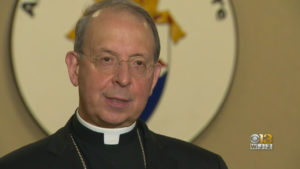
Archbishop Lori edited the final report to the Vatican, omitting the cash gifts given to him by Bishop Bransfield and 11 other high-ranking Vatican and U.S. clerics. His reasoning: the list of recipients would be a “distraction.” His edits came to light as part of a June 5, 2019 story by The Washington Post into the Bransfield case. Reporters were able to obtain both the original and final drafts of the report and a comparison of the two revealed the deletions. The investigators on Lori’s team did not raise any objection to his request to exclude mention of the gifts to cardinals and other church officials. After the redaction was published by The Washington Post, Archbishop Lori had a change of heart. He said, “looking back on this in hindsight, I would say this judgement call was a mistake.”
Also noteworthy, only after publication of The Washington Post expose did Archbishop Lori refunded $7,500 of the $10,500 he received from Bishop Bransfield to Catholic Charities of the Wheeling-Charleston, West Virginia diocese.
Archbishop Lori’s Second Mistake
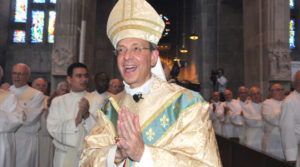
Archbishop Lori, as metropolitan of the region, had received complaints from Catholics in the diocese about Bishop Bransfield for six years prior to his investigation. He never did anything about them and didn’t mention them in his report.
On July 3, 2019 The Washington Post reported that concerns about Bishop Bransfield’s profligate spending were raised with senior Church authorities in the United States and Rome as early as 2012. Catholics in the diocese sent letters and emails to Archbishop Lori and the former apostolic nuncio, Archbishop Carlo Maria Vigano asking them to investigate Bishop Bransfield’s lifestyle and leadership. They were ignored.
Archbishop Vigano—whose histrionics about Cardinal Theodore McCarrick’s abuse of young priests and seminarians made the news repeatedly in 2018 and 2019—also received complaints about Bishop Bransfield. One parishioner, Linda Abrahamian from Martinsburg, West Virginia, wrote to him in 2013: “I beg of you to please look into this situation.” Vigano confirmed to The Washington Post that he had heard “rumors” about Bransfield’s sexual misconduct, but that they had never been “substantiated.” “Unfortunately, I do not recall having received any letter of this nature,” Vigano said, “which I would certainly remember and which I would have followed up on. That being said, the Nunciature receives many complaints every single day about all sorts of things, and it is probable enough that unfortunately this letter was not considered to be serious enough to be brought to my attention. However, the letter, if it was received, is probably filed in the archives of the Nunciature, thus it may be verified.”
I bet. Vigano is the same official who tried to quash an investigation into Minneapolis Archbishop John Nienstedt, who also had a predilection for seminarians and young priests. In 2014 Vigano ordered that documents implicating Nienstedt in an independent sex abuse investigation be destroyed.
Bishop Bransfield’s Gifts
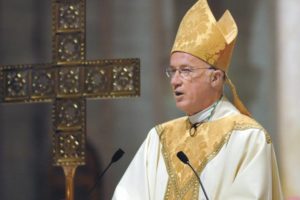
In his 13-year reign Bishop Michael J. Bransfield gave cash gifts to fellow clerics totaling $350,000. He wrote personal checks and was reimbursed with church money. Bransfield sent the checks, many for amounts in four figures, to 137 clergymen, including two young priests he is accused of sexually harassing and more than a dozen cardinals. Some of the “gifts” were for delivering sermons or speeches, other checks were for birthdays or Christmas. Many did not have a notation. The recipients of the largest amounts were among the most influential men in the church in the U.S. and Rome. They included:
Archbishop William E. Lori (archbishop of Baltimore) – $10,500
Archbishop Carlo Maria Vigano (former papal nuncio to U.S.) – $6,000
Cardinal Raymond Burke (former Prefect of the Supreme Tribunal of the Apostolic Signatura) – $9,600
Cardinal Donald Wuerl (former archbishop of Washington, DC) – $23,600 ($10,000 for a church in Rome)
Cardinal Timothy Dolan (archbishop of New York)-
Cardinal Kevin Farrell (Prefect of the Dicastery for the Laity, Family and Life)- $29,000 (for renovations on Rome apartment)
Cardinal Bernard Law (former archbishop of Boston, Archpriest of the Basilica di Santa Maria Maggiore)- $4,800
Archbishop Peter Wells (former official at the Secretariat of State)
Rev. Michael Weston, Monsignor Walter Rossi, Monsignor Vito Buonanno – Basilica of the National Shrine of the Immaculate Conception (Rossi succeeded Bransfield as rector) – collectively $10,800
Monsignor Kevin Irwin (former head of the theology department, Catholic University of America) – $6,500
Rev. Pietro Sambi (former apostolic nuncio to U.S.) – $28,000
Rev. Richard Mullins (priest in Washington, DC)
Rev. Sean Bransfield (nephew, vice chancellor of the archdiocese of Philadelphia) – $9,175
Monsignor Brian Bransfield (nephew, general secretary, US Conference of Catholic Bishops) – $1,350
Cardinal Edmund Szoka (top Vatican official) – $500
Bishop George V. Murray (Youngstown, Ohio diocese) – $3,000
Men who accused Bishop Bransfield (during and after alleged sexual misconduct) – $50-$300
Rev. Frederick P. Annie, Vicar General, Diocese of Wheeling-Charleston, WV (Bransfield’s most senior aide) – The three men who held the role received a total of $38,000)
A breakdown of Archbishop Lori’s gifts showed he was given $5,000 when appointed archbishop of Baltimore, $3,000 for travel expenses and honoraria for preaching at two Red Masses in the Diocese of Wheeling Charleston (an annual event to pray for those in the judicial and legislative branches of government) and the rest as $500 gifts given on the holidays.
Even though it is not common practice for bishops to give cash gifts, “usually, if anything, it’s a poinsettia at Christmas or lilies at Easter,” Lori said, he “simply (thought) Bransfield was being generous and kind” when he gave him money. “I didn’t think much more about it than that.”
Nary a thought flickered across his mind…a $5,000 gift from the bishop of one of the poorest dioceses in the U.S.?
Bishop Bransfield – Where the Money Came From
Bishop Bransfield had his own cash kitty to play with – an endowment to the diocese of oil-rich land in Texas that generated an average of $15 million annually.
The roots of this unusual wealth for the diocese date back to the late 1800s, to a friendship struck on a transatlantic cruise ship between a bishop from Wheeling and a New York heiress. When she died in 1904, Sara Catherine Aloysia Tracy left most of her estate to the diocese, including a large tract of land in west Texas. Oil was discovered there decades later.
The income generated from mineral rights generates an average of $15 million a year, funding an endowment of nearly $230 million. Bishop Bransfield wrote checks from his personal account and had the endowment reimburse him. He used over $2.4 million on travel, much of it personal, flying in chartered jets and staying in luxury hotels. He had a private chef. He also used $324,000 for clothing, jewelry and “personal services.” The diocese paid $4.6 to renovate his residence.
According to the report, Bishop Bransfield and several subordinates spent an average of $1,000 a month on alcohol. When Bransfield was not traveling, fresh flowers were delivered daily to the chancery, at the cost of $100 a day, almost $182,000 in total. Bransfield’s spending reminds me a lot of the former archbishop of Newark, NJ, John J. Myers, another pleasure-loving prelate in a poor diocese. A contemporary of Bransfield, Myers also enjoyed destination vacations and lavish spending on his residence.
Why was Bishop Bransfield able to get away with it for so long? He was nasty, vindictive and intimidating. The men around him were afraid for their positions and careers. They did nothing and said nothing.
A partner at the auditing firm hired by Bransfield told investigators he was “afraid to challenge Bishop Bransfield’s decisions because of the bishop’s position and his overall demeanor.” The diocesan staff said and did nothing out of fear of retaliation and retribution. They opted to protect their positions and careers. Bishop Branfield’s two top aides, Monsignor Kevin Quirk, the judicial vicar, and vicar general Rev. Frederick P. Annie, discussed concerns about the bishop’s conduct with young men but did nothing to stop it, the report said. “Tell it to the Nuncio,” Annie said when Quirk raised the issue. Annie acknowledged to investigators that taking a complaint about the bishop to the nuncio would have been “career ending.”
Intervention would also have ended their cash gifts. Vicar General Annie, and the two other men who served in the position, received $38,000. Pietro Sambi, papal nuncio from 2005-2011 took in $28,000 over the years. Carlo Maria Vigano, papal nuncio from 2011-2016 got $6,000 during that period. There is no mention of Pope Francis’ appointee, Archbishop Christophe Pierre (2016-present). Perhaps he didn’t take the bait.
Bishop Bransfield – Life as a Gay Bishop
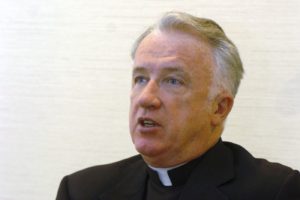
Archbishop Lori outlined details of what the investigation had found about Bishop Bransfield’s piggish behavior: “The team uncovered a consistent pattern of sexual innuendo and covert suggestive comments and actions toward those over whom the former bishop exercised authority.”
The report cites nine men in the Wheeling-Charleston diocese who accused Bransfield of running his hands over their genitals, kissing them, exposing himself, and commenting on their sexual attractiveness. Diocesan officials witnessed Bransfield’s “predatory” behavior toward altar servers, a tendency troubling enough that Monsignor Quirk tried to make sure that no altar server was left alone with him.
One seminarian recalled sitting on Bransfield’s lap, being kissed by the bishop and thinking, “I either do this or completely reinvent my life.” Bransfield asked him to take his pants off.
Seminarians and young priests asked for help. They were instructed instead to “make your boundaries clear,” or told they had no choice but to join Bishop Bransfield on trips or sleepovers at his residence. Bransfield used alcohol, oxycodone and other prescription drugs, which “likely contributed to his harassing and abusive behavior,” the report states.
In an interview with The Washington Post, Bishop Bransfield disputed the allegations, saying “none of it is true,” but declined to go into detail since his attorneys had advised him not to comment. “Everybody’s trying to destroy my reputation,” Bransfield said without elaborating. “These people are terrible to me.”
In his June 5, 2019 letter to priests and lay faithful of the Wheeling-Charleston diocese, Archbishop Lori remarked: “I am deeply pained by and sorry for the harm that the former bishop caused to those he was charged with shepherding in a spirit of Christ-like humility, service, pastoral care and charity. There is no excuse, nor adequate explanation, that will satisfy the troubling question of how his behavior was allowed to continue for as long as it did without the accountability that we must require of those who have been entrusted with so much – both spiritual and material – as bishops and pastors.”
Archbishop Lori’s words are strong and clear. Now, the hard part. Bishops need to get tough with rogue bishops—thieves, liars, sexual abusers and men who don’t practice what they preach. They need to confront them, and they need to eliminate them from their ranks. No more live and let live and looking the other way. Starting with you, Archbishop Lori! This is also true for diocesan officials. All too often the desire for a cushy career outweighs their sense of decency. Get some backbone. Blow the whistle on corrupt prelates that are a cancer and rot on the faith.
Update – A Penthouse, Limousines and Private Jets: Inside the Globe-Trotting Life of Bishop Michael Bransfield – from Hear Our Voices, The Gay Catholic Priests’ Blog.

Wm. L. Toomey’s Suicide
On Saturday evening, December 4, 1982, a man walked into Sacred Heart Church in Boise, Idaho. It was wet and chilly. The stranger was blond, tan and stocky. He appeared to be in his late 30s or early 40s. He wore a brown leather belt with a large buckle displaying a Mexican 100-peso coin, and a silver and turquoise bolo tie. From the tan and the clothing, he appeared to be from the Southwest.
The stranger wanted to go to confession, but it was occupied at the time. As parishioners entered for the 6 PM Mass, one of them, a 91-year old woman named Grace Leeburn, found the man on his back, dead. Blood and drool formed a thin stream by his head. He had swallowed cyanide tablets. In his pockets he had a wallet with all ID removed but containing $1,900. There was also a typewritten note: “In the event of my death, the enclosed currency should give more than adequate compensation for my funeral or disposal of my remains (prefer to be cremated) expenditures. What is left over, please take this as a contribution to this church. God will see to your honesty in this.” Signed – Wm. L. Toomey 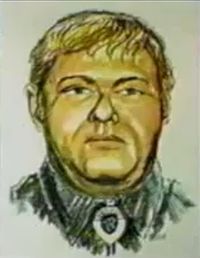
The dead man was never identified. No fingerprints turned up from law enforcement databases. “Wm. L. Toomey” is similar to “R. J. Toomey,” an apparel manufacturer for priests. A clue?
There were several theories about who he was and why he committed suicide in a Catholic church. He may have intended to die shortly after confession, but miscalculated how long it would take for the cyanide to kill him. He may have decided to end his life in church so he could make peace with God, and have his body taken care of respectfully. Or, out of anger, despair or some other emotion, he decided to commit a grave sin in a sacred place. Investigators believed he had a strong connection to Catholicism. A few speculated he could be a priest or former priest. To this day, no one has been able to identify the man, or why he had come to the church to absolve himself of his sins.
The pastor of the church, the Rev. W. Thomas Faucher, said the funeral Mass for Wm. L. Toomey, and said the Mass was for all those who have died in despair during the holidays. The stark grey coffin was adorned with fresh flowers. “He came to us to die,” Faucher said. “We don’t know who he is, but we come here in faith to pray for him, whoever he may be, and to pray for ourselves.”
Later on, investigators started looking into the possibility that Wm. L. Toomey’s suicide might be connected to the murders of two or more Catholic priests. There were a string of murders of priests from Texas, New Mexico and up through Arizona to the Pacific Northwest in the years before Toomey’s death. Some cases produced viable suspects, but many others did not.
The Murder of Fr. Ryan
On December 22, 1981, the nude body of 49-year-old Fr. Patrick Ryan was found inside Room 126 at the Sand and Sage Motel in Odessa, Texas. Fr. Ryan was the pastor at St. William’s Church in Denver City, located over 90 miles away. He had checked into the motel the previous night under a false name. 
When a cleaning woman opened the door to Room 126 the next afternoon the place was in shambles. There was dried blood everywhere, some of it in and around the gaping holes that had been punched through the walls. The air conditioner was broken and dangling from the wall. There were clothes strewn around the room, along with several beer cans and cigarette butts. The phone had been ripped from the wall, and the television smashed. The bed was overturned, and the frame broken. A naked, bloody man lay face down, his hands tied behind his back with a sock, his body covered in abrasions, across his buttocks was a long, superficial wound.
By way of background, Fr. Ryan was an Irish-born priest who reportedly spent a decade in Africa as a missionary before being assigned in 1979 to St. William’s Church in Denver City, Texas. How he got from Africa to a tiny panhandle town in Texas near the New Mexico border is anyone’s guess.
Fr. Ryan often picked up hitchhikers on the 40 mile stretch of road connecting Denver City to Hobbs, New Mexico. On December 8, 1981, Ryan picked up James Harry Reyos, who was on his way to Hobbs to look for work. The two men drove into town and spent the evening at a bar drinking beer and vodka, before Ryan drove them both back to Denver City. Ryan introduced himself only as “John.”
James Harry Reyos was a 25-year-old Jicarilla Apache, lonely and out of work. He was uncomfortable and ashamed of being gay. He turned to alcohol to cope. By the time Ryan picked him up Reyos had been arrested 30 times on alcohol related charges. 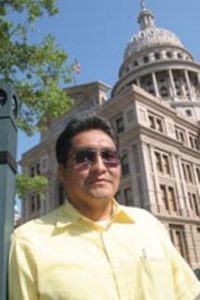
On December 20, 1981, the day before the priest was murdered, Reyos accepted an invitation to visit Ryan at the rectory at St. William’s Church. They began drinking, flipping through a photo album of Reyos’ childhood on the reservation. Suddenly, Reyos said, the priest grabbed him by his shirt collar and push him down to perform oral sex. After that Reyos fled into the night. “I didn’t even grab my stuff,” before hurrying out of the rectory. I was walking down the street thinking, “That didn’t happen, that couldn’t happen with Father (Ryan).”
Several months later, flooded with alcohol, confusion and feelings of guilt, Reyos called police and confessed to the murder. Even though he recanted when he sobered up and had receipts and a speeding ticket to prove he was near Roswell, New Mexico when the murder occurred, he was convicted and sentenced to 38 years in prison. He served 20. Reyos is working to clear his name and is being helped by public prosecutors and a state representative who believe him and are sympathetic to his cause.
The Murder of Father Ben
In the middle of the afternoon on November 10, 1982–three weeks before the suicide of Wm. L. Toomey–a 54-year-old man was found dead at the El Rancho Motel in Yuma, Arizona. When the police arrived they found the man face down on the bed. He was naked. His hands were bound behind his back with black electrical tape. The victim was identified as Father Benjamin J. Carrier from Our Lady of Light Church in San Diego, California. He priest had been strangled. 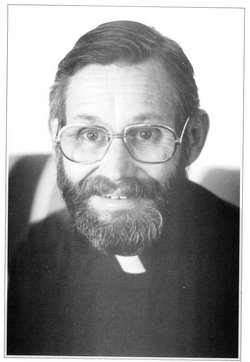
References to “Father Ben” as he was called, can be found in California newspapers from 1967 through the early 70s. He had a reputation for trying to help the homeless and the down and out. 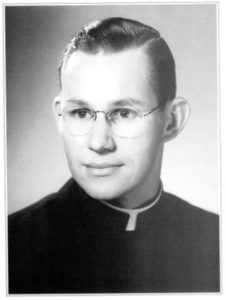
It appears the priest was killed by two hitchhikers he had picked up. One witness said she saw Father Ben with two young men at the motel pool the day before he was killed. The motel manager said a young man with light facial hair was in Carrier’s truck when he arrived at the motel. Carrier paid for two people to stay the night. The priest’s truck was found abandoned in Las Vegas a few weeks later.
A week after the murder, The Southern Cross, the newspaper of the San Diego Archdiocese, published an article about Fr. Ben. Maudlin and dramatic, the article was ironic in a way it wasn’t meant to be: “..Father Ben was not a cautious man,” the writer said. “He took the scriptures very seriously, and so he lived dangerously, risking himself not wisely, not sensible, but in the only way he could. And in his imprudence, his foolishness, he shamed us in our comfortable self-protection…It is a heavy burden, and few of us could heft it with the same dogged self-immolation that he did. But we can all give a little more of ourselves, drop a few more defenses, mortgage a little more comfort and safety, to carry Christ’s mission into danger zones of unbelief.”
Murder Theories
One of the investigators in Wm. L. Toomey’s suicide felt there was a connection between the unknown man and the unsolved killings of several priests, including Fr. Ryan and Fr. Ben. He thought Toomey was a priest or a former priest, and probably a victim of sexual abuse himself.
I think whoever killed Fr. Ryan and Fr. Ben was a victim of sexual abuse. The savagery and violence in the murders point to a very deep anger and rage. But whether the murder was the same person isn’t clear. Was each killing random, or was it a serial killer? Were the killings personal revenge for sexual abuse, or an opportunistic killing during a sexual encounter? 
What is clear to me is that church officials and local police never tried very hard to catch the killer. There is no mention of accumulated evidence–motel records, phone calls, witness statements, fingerprints, sketches, blood and semen analysis, sexual activity or assault. The police, parishioners, friends and others found it hard to believe–didn’t want to believe–a Catholic priest was killed after bringing another man to a motel for sex.
Wm. L. Toomey was buried in Dry Creek Cemetery in Boise, Idaho. Fr. Ben was brought back to San Diego to be buried. Fr. Patrick “Paddy” Ryan’s body was flown back to Ireland, and interred in St. Fintan’s Cemetery in Doon, Co. Limerick. Bishop Leroy Matthiesen of Amarillo and Bishop Joseph Fiorenza of San Angelo presided at Ryan’s funeral on December 29th, a week after his murder. Bishop Matthiesen called Fr. Ryan “yet another martyr.”
That was a curious choice of words. I wonder why kind of martyrdom he had in mind.











































